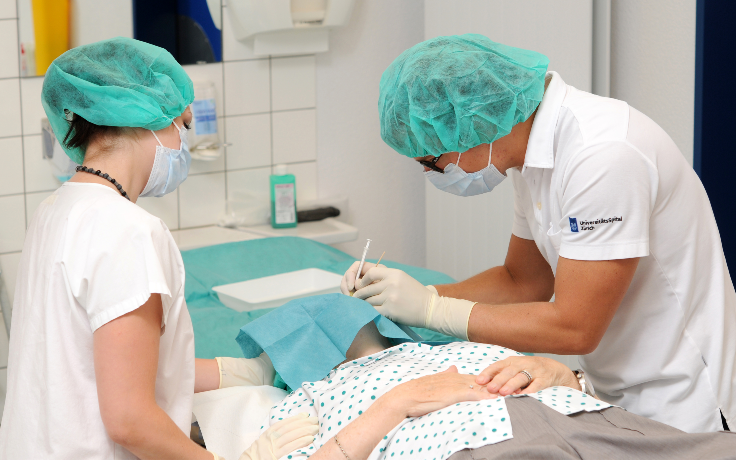Diagnostics
The earlier the diagnosis is made, the better the success of the treatment: early detection is therefore important. From the age of fifty, have your eyes checked annually by your ophthalmologist and contact your ophthalmologist immediately if you notice a sudden deterioration in your vision. The diagnosis is made by an eye examination after pupil dilation and various instrumental procedures (usually a contrast medium examination).
Treatment
No effective treatment is yet known for dry AMD. In most cases, wet AMD is successfully treated with injections into the posterior segment of the eye (vitreous body). This involves injecting an antibody fragment that inhibits the formation of new blood vessels. Treatment takes place regularly on a monthly basis or at varying intervals depending on the activity of the disease. Regular checks of the retina using optical coherence tomography (OCT) allow success to be monitored.

Course
The treatment of wet AMD can often improve or stabilize vision. The earlier treatment is started, the greater the chance of improvement. Early detection is therefore important. As AMD only affects the center of the retina, but not the outer areas, even with advanced disease only vision in the center becomes poor, but not peripheral vision or orientation in space. AMD patients therefore do not become “blind” in the narrower sense. They can almost always use their peripheral vision to find their way around their own home, for example, or go for a walk without a guide. By adapting magnifying visual aids, the existing vision can often still be used in such a way that reading is possible.
Prevent
The best way to prevent the progression of AMD is to stop smoking. Vitamin supplements have not shown any clear benefit in preventing or slowing down AMD.
